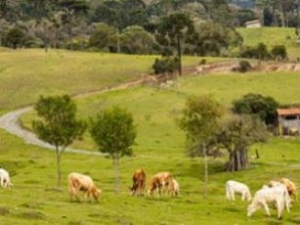Economic - Markets
CME: 14.5%/More Increase in US Corn Price Likely

If the feedstuff cost profile increases significantly, like from a short-crop, hog and poultry weights can decline relative to their up-trend. But, for cattle there are more considerations.
First, a very quick summary of steer and heifer dressed weights in recent years. In much of 2017 and 2018 fed cattle were pulled through the feedlot stage rather quickly due to strong packer demand for animals.
Then in late 2018 and into 2019, winter weather and muddy feedlot conditions also dampened dressed weights relative to trend levels. A fourth order polynomial formula fits the history (back to 1960) rather well (see graphic).

The biological reason why cattle weights can respond much differently than hogs or poultry is because they are ruminants. That is, cattle have the digestive system allowing them to thrive on forage, not just grain (e.g., corn) and protein (in the plant-based category that is to a major extent soybean meal).
In a short-crop year, when pasture and range conditions are relatively good (like so far this year) steers and heifers do not need to go on-feed (placed into feedlots) where corn is the major feedstuff, they can stay on forage.
Further, in those situations, the market facilitates gain on forage by placing price discounts on calves versus heavyweight yearling animals. Feedlots adapt to higher feedstuffs costs by preferring heavier and more mature cattle placed on-feed, which reduces total grain used per animal.
Then the second biological factor comes into play, heavier/older animals when placed on-feed tend to have bigger carcasses when harvested. Of course, some years have poor US corn crops due to drought and poor forage conditions or other influences.
Since 1960 (59 years), 15 years had a year-over-year increase in the US farm corn price (crop-year) of 14.5 percent or more. Those increases may have been caused by a short-crop, or increased demand (i.e., ethanol, exports).
For the corresponding calendar year, we show the year-over-year increase in Federally Inspected (FI) steer dressed weight (see table below). For the 15 years of the specified corn price increase, FI steer weight only declined six times. The largest drop was 4.0 percent (1975). On average, higher corn prices were associated with a year-over-year weight rise of 0.4
percent.

If US corn production conditions this year do not further deteriorate, a 14.5 percent or more year-over-year increase in price is likely. And if summer forage remains abundant, winter wheat pasture develops normally, etc., we forecast that cattle dressed weights will rise year-over-year later this year and in 2020.
























